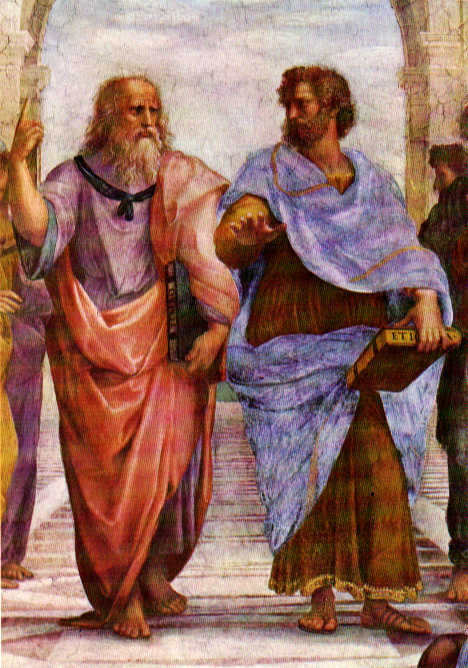
Plato's Theory of Forms
The theory of Forms (eide), which lies at the heart of Plato's mature philosophy, turns our ordinary conception of the world upside down. We normally think that the particular objects we encounter in ordinary sense experience - this table, that chair, those grains of sand on the beach - are what is genuinely real, and that the general natures they exhibit - what it means to be a table, what it means to be a chair, what it means to be a grain of sand - are abstracted from those concrete particulars, and therefore have a secondary degree of reality. For Plato, however, the reverse is true. Particular things have a shadowy kind of half-reality. They come into and pass out of being, appear differently under different circumstances and from different points of view, and proliferate in a way that borders on absurdity. By contrast, the pure natures or meanings the particular things exhibit are constant rather than shifting, remaining what they always have been and always will be. As purely conceptual characters, they have no sensory content to vary with circumstance or perspective, and so can be grasped with a clarity of thought that is foreign to objects of sense. Finally, though they are multiply illustrated by particular objects, the Forms do not themselves proliferate nonsensically. Each Form is a "one-over-many," a unitary nature shared by the multiple things that illustrate it or participate in it. According to Plato, as eternal, intelligible, unitary natures, the Forms are the only true objects of knowledge. They are what the philosopher strives to comprehend with as much clarity as possible, given our embodied emersion in the shifting, inconstant world of sense. In his middle and late period Dialogues, Plato - usually through the mouth of Socrates - shows the Forms emerging in attempts to define justice, courage, wisdom, and the other virtues (the Meno), in the achievements of mathematics (the Phaedo), and in elevated acts of love as well as experiences of artistic creativity and aesthetic enjoyment (the Phaedrus). In the Parmenides, Socrates considers whether there are Forms of everything, including ill-made or defective objects. Finally, in the Republic, Plato traces the relationship between the Forms and the acts of thought that grasp them, and attempts to show that the whole realm of Forms has its ultimate origin in a transcendent pole of absolute goodness, intelligibility, and beauty, which he calls the Form of the Good. In the Republic's famous Allegory of the Cave, Plato creates an imaginative illustration of the philosopher's ascent from the world of ordinary sense-experience to the realm of Forms and beyond, ending in a vision of the Source of all meaning, value, and being.

Republic: Book 6 (The Divided Line, and the Form of the Good)